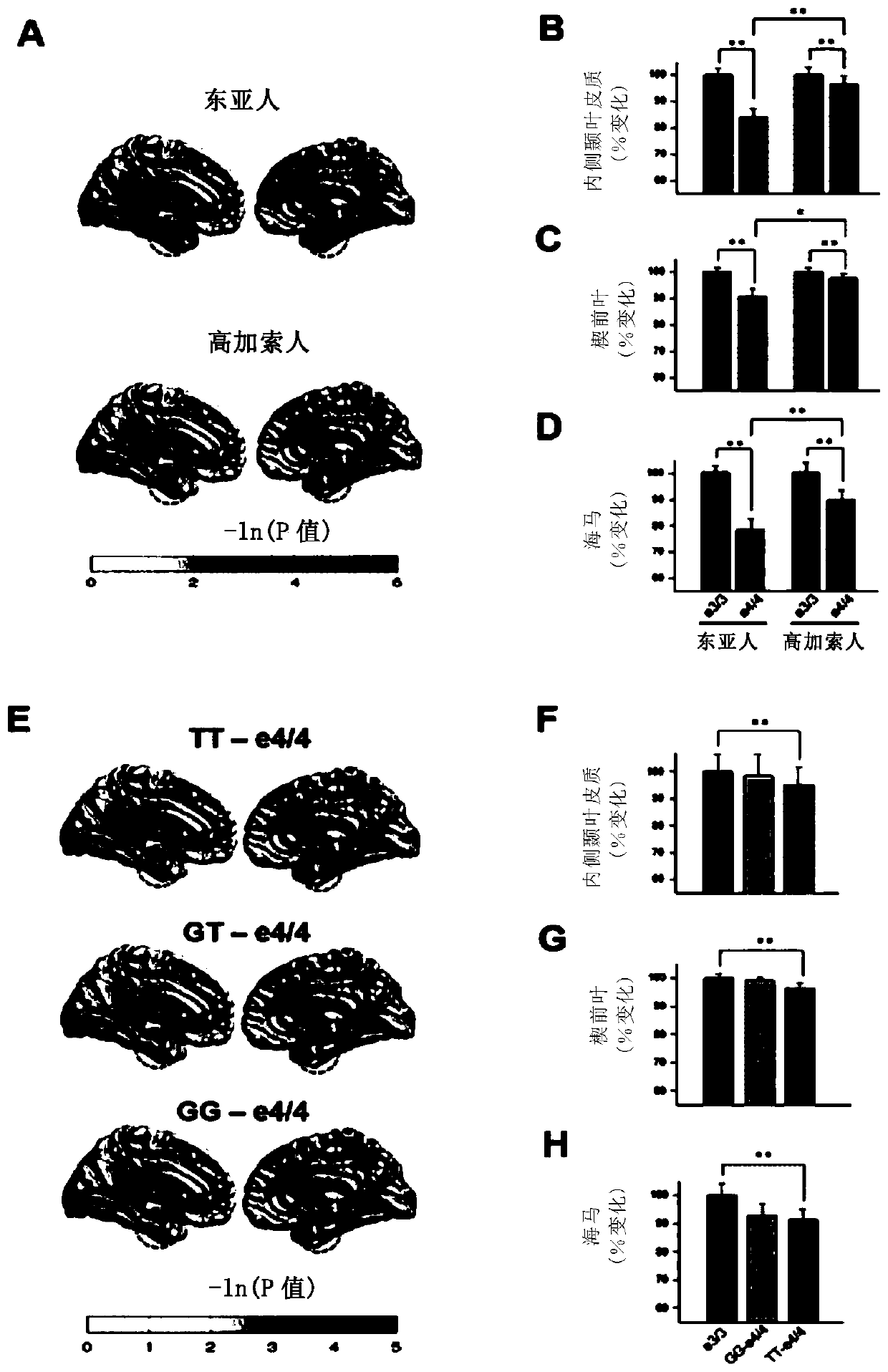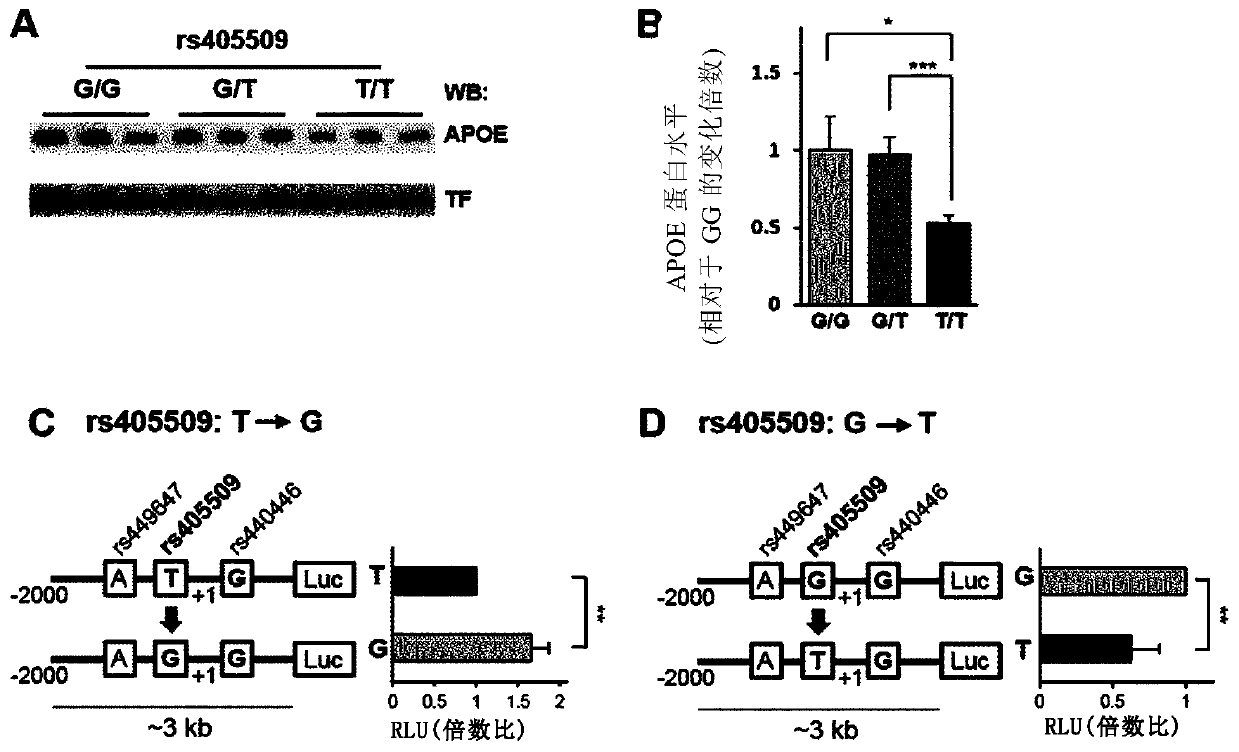Apoe promoter single nucleotide polymorphism associated with alzheimer's disease risk and use thereof
An Alzheimer's disease, nucleic acid technology, applied in the field of single nucleotide polymorphism, can solve the problems of Alzheimer's disease risk and possible inducers are unclear
- Summary
- Abstract
- Description
- Claims
- Application Information
AI Technical Summary
Problems solved by technology
Method used
Image
Examples
Embodiment Construction
[0029] Best Mode for Carrying Out the Invention
[0030] In the present invention, the inventors analyzed the susceptibility of different ethnic groups to APOE e4-mediated AD through a large-scale study. Thus, e4 homozygotes are more likely to develop Alzheimer's disease in East Asians compared with Caucasian and African ancestry. Furthermore, the inventors identified such ethnic differences through association studies of patients and controls with a neuropathological diagnosis of Alzheimer's disease. A handful of previous studies have reported distinct distributions of the APOE e4 allele in different populations (Farrer et al., 1997; Singh et al., 2006). The order of frequency of the e4 allele from high to low was Africa, Europe, and Asia, which is inverse to the order of e4 risk for Alzheimer's disease.
[0031] APOE e4 has been reported to promote a reduction in the thickness of the entorhinal cortex, parahippocampal cortex, and precuneus cortex (Donix et al., 2010; Foley...
PUM
 Login to View More
Login to View More Abstract
Description
Claims
Application Information
 Login to View More
Login to View More - R&D
- Intellectual Property
- Life Sciences
- Materials
- Tech Scout
- Unparalleled Data Quality
- Higher Quality Content
- 60% Fewer Hallucinations
Browse by: Latest US Patents, China's latest patents, Technical Efficacy Thesaurus, Application Domain, Technology Topic, Popular Technical Reports.
© 2025 PatSnap. All rights reserved.Legal|Privacy policy|Modern Slavery Act Transparency Statement|Sitemap|About US| Contact US: help@patsnap.com



